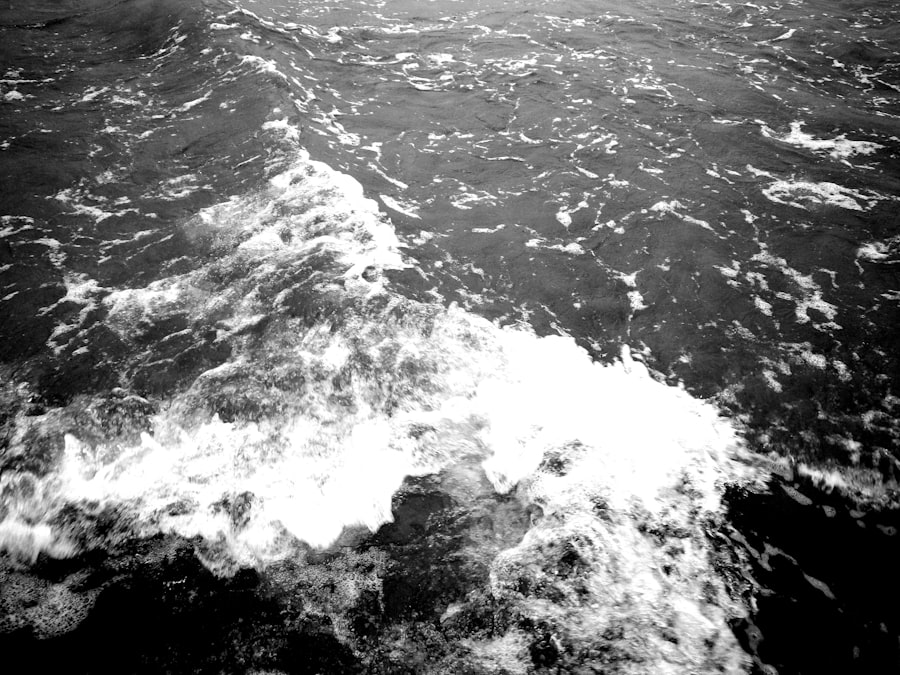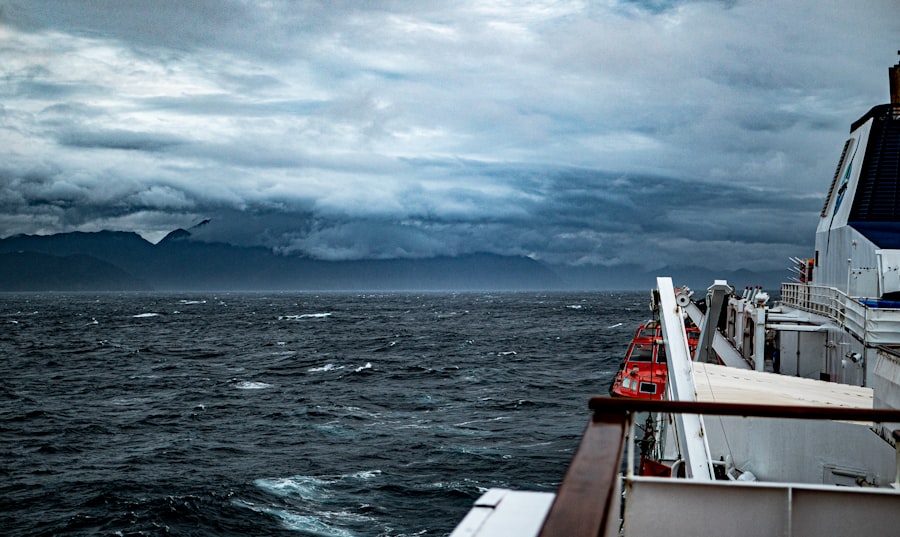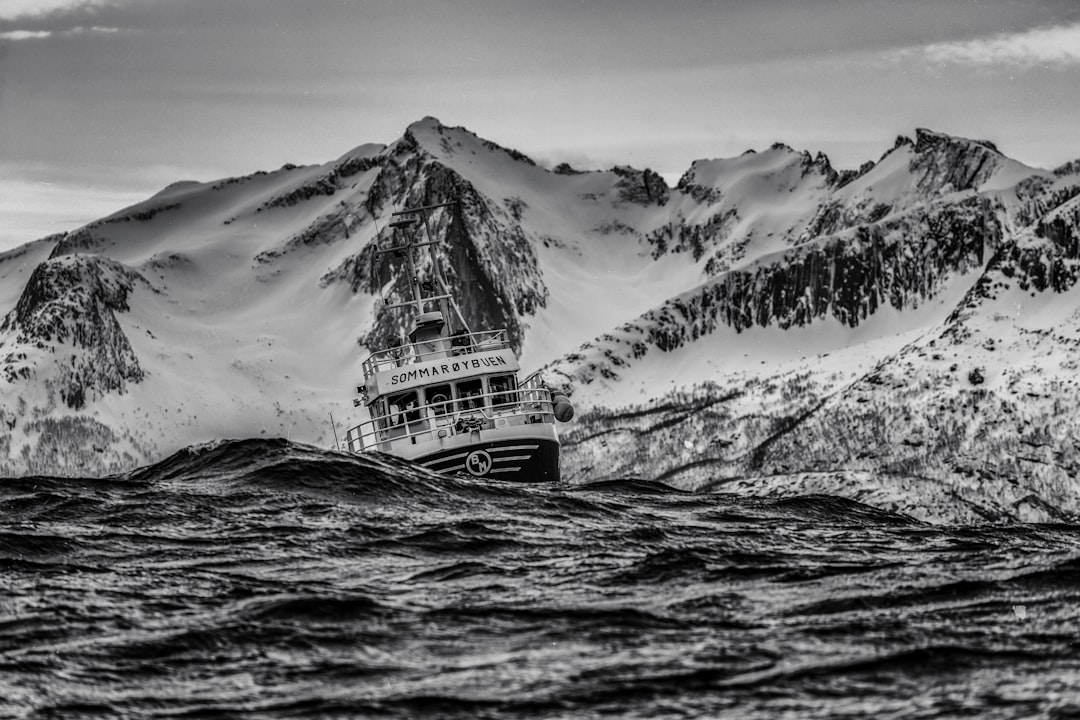The Drake Passage, a body of water situated between the southern tip of South America and Antarctica, is renowned for its tumultuous seas and unpredictable weather. This narrow stretch of ocean, measuring approximately 600 miles in width, serves as a critical conduit for maritime traffic between the Atlantic and Pacific Oceans. Its significance extends beyond mere geography; it is a vital area for marine biodiversity and plays a crucial role in global oceanic currents.
The passage is often characterized by its fierce winds and high waves, which can create challenging conditions for even the most seasoned sailors. The historical context of the Drake Passage adds another layer of intrigue. Named after Sir Francis Drake, the English explorer who navigated these waters in the late 16th century, the passage has long been a point of fascination for adventurers and scientists alike.
The waters are not only a gateway to the Antarctic but also a rich habitat for various marine species, including whales, seals, and seabirds. Understanding the unique characteristics of the Drake Passage is essential for anyone planning to traverse this remarkable yet formidable stretch of ocean.
Key Takeaways
- The Drake Passage is a treacherous stretch of water between South America and Antarctica known for its rough seas and challenging conditions.
- Preparing for the journey involves researching the weather conditions, packing appropriate clothing and gear, and mentally preparing for the potential challenges ahead.
- Packing essentials for the Drake Passage include warm, waterproof clothing, sturdy footwear, seasickness medication, and a camera for wildlife spotting.
- Safety measures on the ship include attending safety briefings, following crew instructions, and familiarizing oneself with emergency protocols.
- Coping with seasickness can be managed by staying hydrated, getting fresh air, and focusing on the horizon to reduce symptoms.
Preparing for the Journey
Preparation is key when embarking on a journey through the Drake Passage. Travelers must first consider their mode of transportation, as various vessels offer different levels of comfort and amenities. Cruise ships, research vessels, and smaller expedition boats each provide unique experiences, catering to diverse preferences and budgets.
It is crucial for travelers to research their options thoroughly, ensuring they select a vessel that aligns with their expectations for safety, comfort, and adventure. In addition to choosing the right ship, prospective travelers should also familiarize themselves with the itinerary and activities planned during the journey. Many expeditions include guided excursions on land, opportunities for wildlife watching, and educational lectures about the region’s ecology and history.
Understanding what to expect can help travelers mentally prepare for the adventure ahead, allowing them to fully immerse themselves in the experience. Engaging with fellow travelers and crew members before departure can also foster a sense of camaraderie that enhances the overall journey.
Packing Essentials for the Drake Passage

Packing for a trip across the Drake Passage requires careful consideration of both clothing and gear. The weather can be highly variable, with temperatures ranging from mild to frigid, depending on the season. Layering is essential; travelers should pack moisture-wicking base layers, insulating mid-layers, and waterproof outer layers to protect against wind and rain.
Sturdy footwear is also crucial, as excursions on land may involve hiking or walking on uneven terrain. In addition to clothing, travelers should not overlook essential gear. A good pair of binoculars can enhance wildlife spotting opportunities, while a high-quality camera will help capture the breathtaking landscapes and unique fauna encountered along the way.
Personal items such as sunscreen, lip balm, and a reusable water bottle are also important to ensure comfort during the journey. By packing thoughtfully, travelers can ensure they are well-prepared for whatever conditions they may face in the Drake Passage.
Safety Measures on the Ship
| Category | Metric |
|---|---|
| Fire Safety | Number of fire drills conducted per month |
| Lifeboat Drills | Percentage of crew participating in lifeboat drills |
| Emergency Response | Time taken to respond to emergency situations |
| Personal Protective Equipment (PPE) | Percentage of crew wearing PPE during designated activities |
Safety is paramount when navigating the unpredictable waters of the Drake Passage. Modern vessels are equipped with advanced technology designed to enhance passenger safety, including radar systems, GPS navigation, and stabilizers that help reduce motion sickness. Crew members are trained in emergency protocols and are well-versed in handling various situations that may arise during the journey.
Before setting sail, passengers typically receive a comprehensive safety briefing that covers essential information such as life jacket usage, emergency exits, and communication procedures. Familiarizing oneself with these protocols can instill confidence in travelers as they embark on their adventure. Additionally, maintaining open communication with crew members throughout the journey can help ensure that any concerns or questions are promptly addressed.
Coping with Seasickness
Seasickness is a common concern for many travelers embarking on a journey through the Drake Passage. The combination of rough waters and motion can lead to discomfort for even those who typically do not experience motion sickness. To mitigate these effects, it is advisable for travelers to take preventive measures before setting sail.
Over-the-counter medications such as antihistamines can be effective in reducing symptoms when taken prior to departure. In addition to medication, there are several natural remedies that may help alleviate seasickness. Ginger tea or ginger candies are popular choices known for their soothing properties.
Staying hydrated and consuming light snacks can also help maintain energy levels and reduce nausea. Finding a stable spot on the ship—such as near the center where motion is less pronounced—can provide relief as well. By being proactive about seasickness, travelers can enhance their overall experience in the Drake Passage.
Navigating the Rough Waters

Navigating the rough waters of the Drake Passage requires skill and expertise from the ship’s crew. The passage is notorious for its unpredictable weather patterns, which can change rapidly from calm to chaotic within minutes. Experienced captains utilize advanced weather forecasting tools to make informed decisions about navigation routes and timing.
This expertise is crucial in ensuring passenger safety while maximizing opportunities for exploration. Passengers can also play a role in navigating these challenging waters by staying informed about weather conditions and following crew instructions. Understanding that rough seas are part of the experience can help travelers maintain a positive mindset during turbulent moments.
Engaging in onboard activities or socializing with fellow passengers can provide distraction and foster camaraderie during rough patches at sea.
Wildlife Spotting in the Drake Passage
One of the most exhilarating aspects of traveling through the Drake Passage is the opportunity for wildlife spotting. The waters are teeming with life, offering glimpses of majestic creatures such as whales, seals, and various seabird species. Travelers often find themselves captivated by the sight of humpback whales breaching or orcas gliding gracefully through the waves.
These encounters create unforgettable memories that enhance the overall experience of crossing this remarkable body of water. To maximize wildlife spotting opportunities, travelers should remain vigilant and keep their cameras ready at all times. Many vessels offer guided wildlife watching excursions led by knowledgeable naturalists who provide insights into the behaviors and habitats of different species.
Engaging with these experts can deepen travelers’ appreciation for the unique ecosystem of the Drake Passage while fostering a sense of connection to nature.
Weather Conditions in the Drake Passage
The weather conditions in the Drake Passage are notoriously unpredictable, making it essential for travelers to stay informed throughout their journey. The region experiences strong winds and rapidly changing temperatures due to its geographical location and proximity to Antarctica. Storms can arise suddenly, leading to rough seas that challenge even experienced sailors.
Travelers should be prepared for a range of weather scenarios by dressing in layers and bringing appropriate gear. It is advisable to check weather forecasts regularly during the journey to anticipate any changes that may affect planned activities or excursions. Understanding that weather conditions can impact travel plans allows passengers to remain flexible and adaptable throughout their adventure.
Emergency Protocols at Sea
While safety measures are in place to minimize risks during a journey through the Drake Passage, it is essential for travelers to be aware of emergency protocols at sea. In case of an emergency situation—such as severe weather or medical issues—passengers should know how to respond effectively. Crew members are trained to handle emergencies and will provide guidance on evacuation procedures if necessary.
Familiarizing oneself with emergency equipment locations—such as life rafts and first aid kits—can enhance passenger confidence during unexpected situations. Additionally, maintaining open lines of communication with crew members ensures that any concerns or questions are addressed promptly. By understanding emergency protocols, travelers can feel more secure as they navigate this challenging yet awe-inspiring passage.
Mental and Emotional Preparation
Mental and emotional preparation is just as important as physical readiness when embarking on a journey through the Drake Passage. The experience can be both exhilarating and daunting; thus, cultivating a positive mindset is essential for making the most of this adventure. Travelers should take time to reflect on their motivations for undertaking this journey—whether it be a desire for adventure, exploration of new landscapes, or connection with nature.
Practicing mindfulness techniques such as deep breathing or visualization can help alleviate anxiety about potential challenges during the trip.
Embracing uncertainty as part of the adventure can lead to unexpected discoveries and memorable experiences along the way.
Making the Most of the Journey
To truly make the most of a journey through the Drake Passage, travelers should embrace every moment—both on board and during excursions ashore.
Participating in onboard activities such as lectures or workshops provides opportunities for learning about the region’s ecology and history.
Taking time to appreciate breathtaking views from various vantage points on deck allows travelers to connect with their surroundings fully. Whether it’s watching seabirds soar overhead or marveling at icebergs floating by, these moments contribute to an enriching experience that transcends mere travel. By remaining open to new experiences and embracing spontaneity, travelers can create cherished memories that will last long after their journey through the Drake Passage concludes.
The Drake Passage, known for its turbulent waters, is often roughest during the Southern Hemisphere’s winter months, from June to August, when strong winds and storms are more frequent. For those interested in learning more about the challenges and experiences of navigating this notorious stretch of water, a related article can be found on MyGeoQuest. This article delves into the factors contributing to the Drake Passage’s infamous reputation and offers insights into the best times for a smoother crossing. For further reading, check out the article on MyGeoQuest.
WATCH NOW! Drake Passage: Earth’s Deadliest Waters Revealed
FAQs
What is the Drake Passage?
The Drake Passage is the body of water between the southern tip of South America and the northern tip of the Antarctic Peninsula. It is known for its notoriously rough seas and challenging sailing conditions.
When is the Drake Passage the roughest?
The Drake Passage is known for its rough seas and challenging sailing conditions throughout the year. However, the roughest conditions are typically experienced during the austral winter months (June-August) when strong winds and high waves are more common.
Why is the Drake Passage so rough?
The Drake Passage is known for its rough seas due to the convergence of the Atlantic, Pacific, and Southern Ocean currents, as well as the lack of any landmass to disrupt the strong westerly winds that circle the Antarctic continent. These factors contribute to the formation of large waves and stormy conditions.
Are there any times when the Drake Passage is not as rough?
While the Drake Passage is generally known for its rough seas, there may be periods of relatively calmer conditions during the austral summer months (December-February). However, rough seas can still occur during this time due to the unpredictable nature of the weather in the region.
